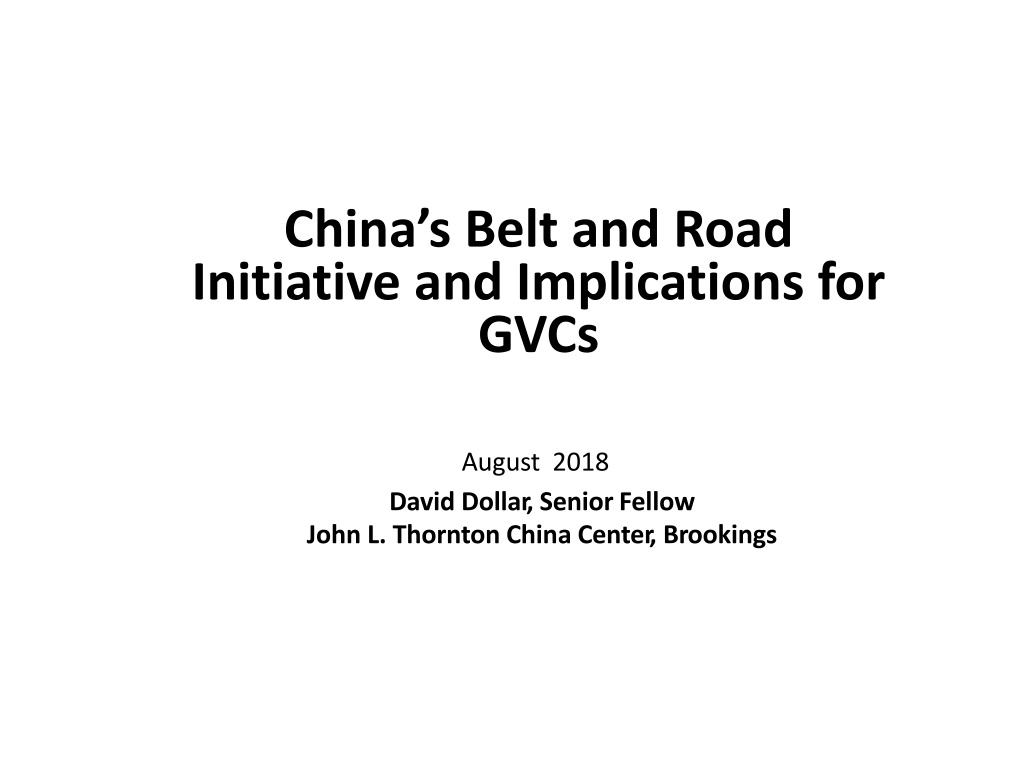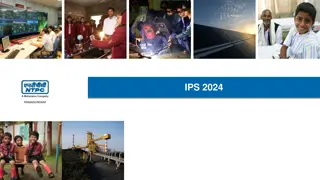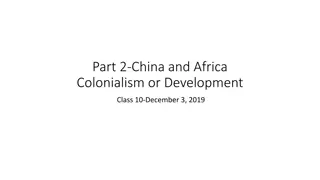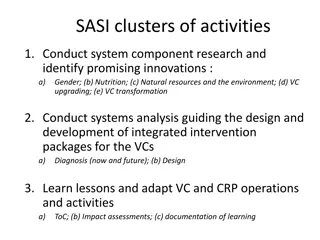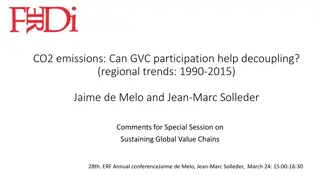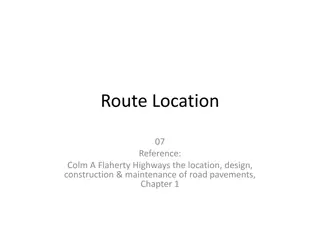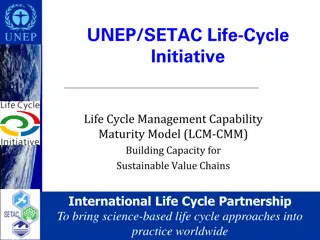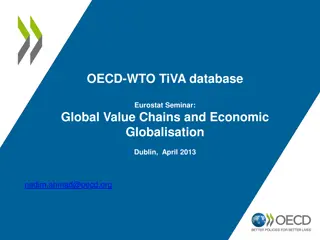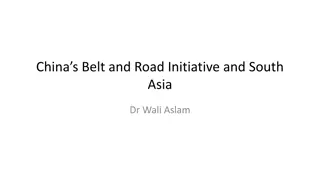Understanding China's Belt and Road Initiative Impacts on Global Value Chains
China's Belt and Road Initiative, proposed by Xi Jinping in 2013, has significant implications for Global Value Chains (GVCs). China's role as a major infrastructure funder through CDB/EXIM/AIIB raises issues such as risk, debt sustainability, weak GVC linkages, and environmental safeguards. Despite challenges, AIIB presents a promising innovation. McKinsey's study highlights the crucial need for infrastructure financing globally, with a focus on developing Asia. Data transparency and detailed reporting in China's development finance remain complex.
Download Presentation

Please find below an Image/Link to download the presentation.
The content on the website is provided AS IS for your information and personal use only. It may not be sold, licensed, or shared on other websites without obtaining consent from the author. Download presentation by click this link. If you encounter any issues during the download, it is possible that the publisher has removed the file from their server.
E N D
Presentation Transcript
Chinas Belt and Road Initiative and Implications for GVCs August 2018 David Dollar, SeniorFellow John L. Thornton China Center, Brookings
In 2013 Xi Jinping proposed the Belt and Road Initiative
Chinas Belt and Road Initiative China has become a major funder of infrastructure through CDB/EXIM/AIIB China s initiative is global and demand-driven BRI countries get a minority of the funding While infrastructure financing is welcome, the initiative raises issues: Risk and debt sustainability Weak link with GVCs Environmental and social safeguards AIIB is a promising innovation and points the way towards reform
Belt and Road countries take a small share of CDB/EXIM outstanding loans, end-2016
Chinas development finance: Data issues and options CDB/EXIM do not report detailed data on countries and terms Updated AidData through 2014 based on media reports and follow-up covers 131 countries SAIS China-Africa Research Initiative covers lending to African countries through 2015
Half of Chinas $40 billion annual lending has gone to BRI countries
McKinsey 2017 study of infrastructure gaps Infrastructure will be a crucial input into sustaining growth and poverty reduction Infrastructure financing needs for the developing world (excluding China) are on the order of $1 trillion per year until 2035 60% of that is needed in developing Asia Power and roads together account for more than half the need
Where infrastructure finance is needed per McKinsey 7% 13% Africa 27% India 20% Asia LAC Eastern Europe 33%
Chinas development finance 2012-14: Regression analysis Only population is significant No favoring of landlocked Asia or Maritime Asia Uncorrelated with indices of political stability and rule of law
Partial scatter of CDF and rule of law 5 0 e( lnblend | X ) -5 -10 -1 -.5 0 .5 1 1.5 e( rol15 | X ) coef = -.55205406, se = .89571123, t = -.62
GVC participation is highly correlated with rule of law
Rising external debt raises sustainability issues
Environmental safeguards in two Cameroon hydro projects Project Financier Loan terms Contractor Preparation Env oversight Memve ele China EXIM Euribor+3.1% 15 years, 5 grace 10 grace Sinohydro 4 years Gov Cameroon Lom Pangar World Bank 0.5%, 40 years, China Int l Water-Electric 7 years Independent panel
Asian Infrastructure Investment Bank Charter similar to World Bank and MDBs Acted on Zedillo report recommendations for MDB reform 87 member countries $4.4 billion in lending in first two years, three- quarters co-financed with MDBs India is the largest borrower
Improving Chinas development finance China s financing is too scattershot to have much effect on GVCs Good infrastructure feeds into trade costs and can help developing countries join GVCs However, countries with very poor governance are bad candidates for investment Countries with macro instability (debt unsustainability) and poor rule of law have no involvement in GVCs
Improving Chinas development finance To attract better countries, China s development finance needs to be More transparent More competitive (open procurement) Higher standard (environmental and social standards)
Chinas development finance and evolution of GVCs China has become a major funder of infrastructure through CDB/EXIM/AIIB China s initiative is global and demand-driven BRI countries get a minority of the funding While infrastructure financing is welcome, the initiative raises issues: Risk and debt sustainability Weak link with GVCs Environmental and social safeguards AIIB is a promising innovation and points the way towards reform
